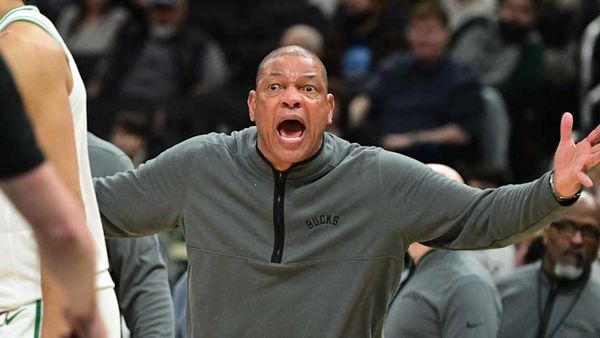
Walking away from greatness isn’t easy, especially when the world is watching. For many, the idea of leaving a successful career at its height seems unthinkable. Yet, some legendary athletes have chosen to retire while still at the top, surprising fans and sparking debates about legacy, health, and personal priorities. Understanding why these stars made such bold decisions can help readers reflect on their own career choices, work-life balance, and the value of knowing when to move on. These stories offer practical lessons about timing, self-awareness, and the courage to prioritize long-term well-being over short-term glory.
For anyone facing a major life or career decision, the experiences of these athletes provide real-world examples of how to weigh risks, rewards, and personal values. Their choices highlight the importance of planning for the future, even when everything seems to be going right. Let’s explore seven legendary athletes who walked away at the peak of their careers—and what we can learn from their decisions.
1. Michael Jordan (First Retirement)
Michael Jordan’s first retirement in 1993 shocked the sports world. At just 30 years old, he had led the Chicago Bulls to three consecutive NBA championships and was widely considered the best basketball player on the planet. Jordan cited personal reasons, including the murder of his father, as a major factor in his decision. He left the NBA with a career average of 32.3 points per game and three MVP awards.
Jordan’s departure had a massive impact on the league, with TV ratings dropping by nearly 20% the following season. His decision shows that even the most successful individuals may need to step back for personal reasons. For readers, this highlights the importance of mental health and family, even when career momentum is strong. Sometimes, stepping away can lead to new opportunities—Jordan eventually returned to win three more titles.
2. Barry Sanders
Barry Sanders, one of the NFL’s most electrifying running backs, retired abruptly in 1999 at age 31. He was just 1,457 yards shy of breaking the all-time rushing record and had averaged over 1,500 yards per season. Sanders cited frustration with the Detroit Lions’ lack of competitiveness and a desire to avoid the physical toll of football.
His retirement stunned fans and analysts, but it also sparked conversations about the long-term health risks of professional sports. For readers, Sanders’ story is a reminder to consider the physical and emotional costs of any demanding career. Prioritizing health and happiness over records or external expectations can be a wise, if difficult, choice.
3. Björn Borg
Tennis legend Björn Borg retired in 1983 at 26 years old, after winning 11 Grand Slam titles. Borg dominated the sport in the late 1970s and early 1980s, winning five consecutive Wimbledon titles. Despite his success, he lost motivation and struggled with the relentless pressure of competition.
Borg’s early exit is a classic example of burnout, a phenomenon affecting athletes and professionals in every field. Studies show that nearly 77% of professionals have experienced burnout at some point in their careers. Borg’s story encourages readers to recognize the signs of burnout and take proactive steps to protect their mental health, even if it means making tough decisions.
4. Jim Brown
Jim Brown, often called the most excellent running back in NFL history, retired in 1966 at age 30. He led the league in rushing eight times in nine seasons and was still at the top of his game. Brown left football to pursue an acting career, demonstrating a willingness to reinvent himself.
His decision underscores the value of having diverse interests and planning for life beyond a primary career. For readers, Brown’s story is a powerful reminder to develop new skills and passions, ensuring a smoother transition when it’s time to move on. Diversification isn’t just for investments—it’s a smart strategy for personal growth.
5. Sandy Koufax
Sandy Koufax, a dominant pitcher for the Los Angeles Dodgers, retired in 1966 at age 30 after winning three Cy Young Awards and an MVP. Despite leading the league in strikeouts and ERA, Koufax left due to chronic arthritis in his pitching arm. He chose long-term health over short-term accolades, even as he was still considered the best in baseball.
Koufax’s story highlights the importance of listening to your body and making decisions that protect your future quality of life. This is a practical lesson in risk management for readers: sometimes, the best move is to walk away before irreversible damage occurs. Prioritizing health can lead to a longer, more fulfilling life beyond work.
6. Lorena Ochoa
Lorena Ochoa, the top-ranked women’s golfer in the world, retired in 2010 at age 28. At the height of her career, she had won 27 LPGA events. Ochoa stepped away to focus on her family and philanthropic work, showing that personal fulfillment can outweigh professional achievement.
Her decision resonates with anyone considering a career change for family or personal reasons. Ochoa’s story demonstrates that success isn’t just about titles or money—it’s about aligning your work with your values and priorities. Readers can take inspiration from her example to pursue what truly matters.
7. Andrew Luck
Andrew Luck, the star quarterback for the Indianapolis Colts, retired in 2019 at age 29. He had just led his team to the playoffs and was considered one of the NFL’s brightest talents. Luck cited the cycle of injuries and rehabilitation as the main reason for his decision, prioritizing his long-term health and happiness.
His retirement reignited debates about the physical and mental demands of professional sports. For readers, Luck’s story is a reminder to set boundaries and recognize when a job is taking too much of a personal toll. Making a bold decision to protect your well-being can be the smartest move, even if it’s unpopular.
Lessons from Legends: Knowing When to Move On
These legendary athletes who walked away at the peak of their careers show that timing, self-awareness, and courage are essential for long-term success and happiness. Their stories reveal that prioritizing health, family, and personal values can lead to more fulfilling lives, even if it means leaving behind fame or financial rewards.
Regularly assess your career and life priorities. Don’t be afraid to make bold decisions if your well-being or happiness is at stake. Whether considering a job change, a new direction, or simply needing a break, remember that walking away at the right time can be a sign of strength, not weakness.
Have you ever faced a tough decision about leaving something behind at your own peak? Share your story in the comments below.
Read More
Fun with Celebrities and Money
The Madden Curse Strikes Again
The post 7 Legendary Athletes Who Walked Away at the Peak of Their Careers appeared first on Clever Dude Personal Finance & Money.







